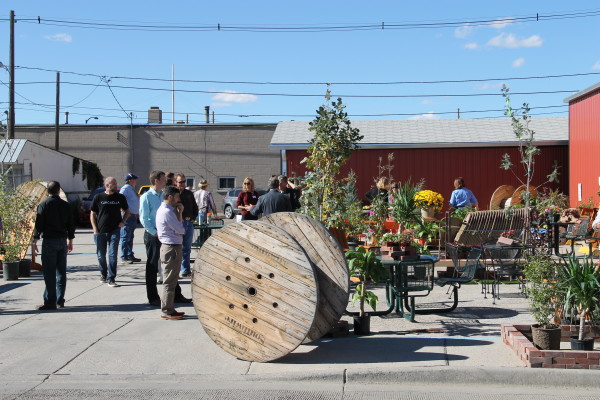A Walk in the Park: Public Engagement Made Easy
 Public engagement seems like it should be simple – just ask for people’s opinions and show them a few possibilities, right? As most in the public sector could tell you, it’s rarely that easy. Getting your community’s residents to show up, get involved, and support a project takes creativity and enthusiasm – and it helps to have an ace in the hole like impressive graphics to really sell your project. Things have changed since the days of flip-charts and free doughnuts at City Hall. Here are a few new strategies to increase participation and get people interested.
Public engagement seems like it should be simple – just ask for people’s opinions and show them a few possibilities, right? As most in the public sector could tell you, it’s rarely that easy. Getting your community’s residents to show up, get involved, and support a project takes creativity and enthusiasm – and it helps to have an ace in the hole like impressive graphics to really sell your project. Things have changed since the days of flip-charts and free doughnuts at City Hall. Here are a few new strategies to increase participation and get people interested.
Give them a peek into the possibilities
Show your community what you’re proposing to accomplish with 3D graphics or realistic fly-through animations. People love seeing the future, and this is one of the most innovative ways to get communities excited about a project.
Have a designer graphically capture the ideas and thoughts generated in a design workshop or charrette. Doing so gives participants who might not be comfortable doing their own drawing an opportunity to become part of the design process. It means listening, metabolizing, and graphically conveying the many ideas that can be proposed during a work session. Having a drawing take shape before participants’ eyes lets them make small, meaningful changes to a design.
The above videos show Ayres Associates concepts for a nature center and a fishing/canoe/kayak access project in Wisconsin. Here are links to concept design videos we produced for an Iowa landfill-turned-recreation-area project and a Wisconsin causeway widening and improvement project.
Get outside and have some fun
Create a tactical urbanism workshop in which people can get their hands a little dirty. This strategy is a great opportunity for educating people about community design and transformational redevelopment. Reimagining a space temporarily can spark enthusiasm and set the table for more permanent improvements to take root. The hands-on nature of the workshop will excite participants and hook them for the rest of the process.
Lead a multimodal tour of the project site. Multimodal tours help residents get a different perspective on a project. Walking or (if there’s a river involved) kayaking can help stakeholders get in touch with the area and see things with fresh eyes. Visiting another community that has grappled with similar issues can also provide new insights.
Install listening stations or a planner in residence. Meeting people in places they frequent is a sure-fire way to capture a cross section of the community, particularly those who wouldn’t otherwise venture out to a public meeting. Camping out at the local coffeeshop or tailgating at a baseball game can bring more voices to the conversation.
Make it easy to engage
Online engagement is one of the easiest and most efficient ways to reach people. Not everyone can make it to meetings or events, but setting up an online environment where residents can voice their concerns or suggest ideas at their convenience gives everyone the opportunity to participate.
Making sure people feel they’ve been heard is the real reason for public engagement – especially if a proposed project has controversial elements. Social media and online platforms like MySidewalk allow for this vital two-way communication to take place no matter what the schedule. While complete consensus may not be fully achievable, a considerate approach will result in stakeholders who are satisfied that their voices have been heard, even if the end result doesn’t match their personal preference.

Post a comment: